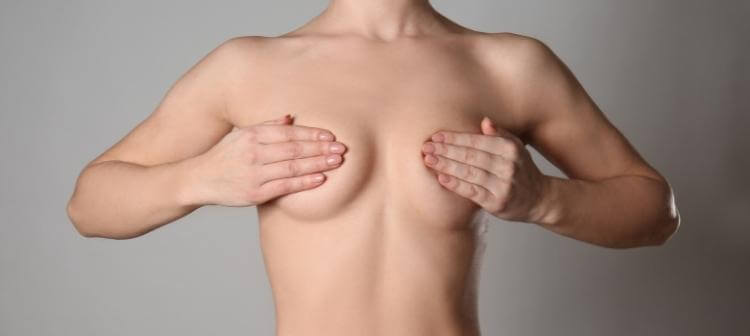Breast implant rippling is a relatively common complication following breast augmentation surgery and is exactly how it sounds – the breast implant surface wrinkles but it is only considered an issue when it can be seen or felt by the patient.
All breast implants may ripple but most breast augmentation patients are never aware of it. In this blog, we cover what causes visible rippling of implants and how you can minimise your risk.
Implant placement and breast implants rippling
Avoiding visible breast implant ripple is often down to careful procedure planning as it is mostly due to poor tissue coverage. During your breast augmentation consultation with Mr Alex Karidis he will carefully assess the amount of existing breast tissue you have, taking this into account when planning implant placement.
Breast implants can either be placed above or below the muscle. Implants above the muscle sit just behind your existing breast tissue so this is not advisable for patients with little to no breast tissue.
Even with the implant placed below the muscle, it may still be an issue as the muscle doesn’t completely cover the implant and visible rippling may be noticeable towards the centre of the cleavage or on the side of the breast.
Is breast implant rippling dangerous?
Breast rippling is not something you should worry about. Some patients will not even realise that their breast implants are rippling, whereas others may notice the appearance of their breasts changing. Whatever the case, it is not dangerous
Breast implant rippling and type of implants
Alongside carefully planning where the implant will be placed, Mr Alex Karidis will also choose the implant size and shape based on your anatomy and to help minimise complications such as breast implant rippling. Round implants tend to ripple more than anatomically-shaped implants and larger breast implants are more prone to rippling than smaller ones.
Maintaining a stable weight post-procedure
Whatever your procedure, it’s important that you are at or near your ideal body weight at the time of the assessment and surgery and that you are able to maintain this. This is because future weight fluctuations can affect your results – whether that’s due to skin sagging after a facelift or stretched stomach muscles post abdominoplasty. After a breast augmentation, significant weight loss will affect the thickness of the tissue covering your implants any breast implant rippling will therefore be more noticeable.
Does breast implant rippling go away?
Unfortunately, breast implant rippling will not simply go away by itself. Some patients try exercises and massages to subdue rippling, however, in most cases, revision surgery is the most effective form of correction.
Treating breast implant rippling
In cases where rippling of implants is very noticeable and causing you distress, there is the option of replacing the implants with a different type of implant or changing the implant position. If the scar capsule that surrounds the implant is too large, swapping the implants for slightly larger ones can help to fill out the breast envelope.
Another option is fat grafting. Consultant plastic surgeon Mr Mark Ho-Asjoe who works alongside Mr Alex Karidis can perform fat transfer to the breasts. Fat is taken from a donor area, such as the stomach or thighs and carefully treated to remove any impurities. It is then carefully placed over the implants, particularly in the upper pole of the breast, to enhance fullness and shape and reduce any visible implant rippling.
For more advice on breast augmentation, call 0207 432 8727 to arrange a consultation.
















